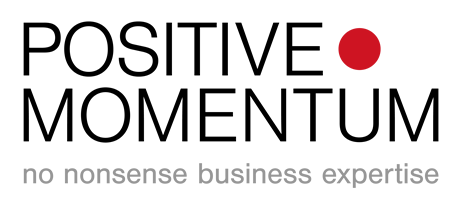Taking the Strain out of Business Transformation
Our take on business transformation is that it’s pretty much always like participating in a rather vigorous and quite protracted tug of war. If you fancy your chances on winning one of those, then it’s an activity that shouldn’t scare you too much!
In all likelihood you will find yourself ‘taking the strain’ often!
So, how do you do it well, pulling the opponents over the line in a way that achieves the original objectives, comes in within budget, doesn’t completely annoy the hell out of everyone around you who is valiantly trying to get on with the day job, and most importantly is sticky enough to ensure its more than a 3 day wonder when it’s finished?
We don’t pretend to be world experts and there are enough books written by people who do, but having been immersed in a few transformations in our time we think there are some practical, hands-on tips for transforming stuff in a way that works.
What’s the real reason for doing this?
It’s relatively easy to come up with What needs doing (although this can also be iterative in a complex transformation). It’s not so easy to be clear on the Why. Understanding the imperative for the transformation though is critical to successful change and something you need to do first up. You will be lobbied from the off by all those who will pretend to want it square shaped (as is the wish of those on high) but really want it round shaped, (as is their wish), so you kind of need to know just how much latitude you have to either let them have a bit of rope, or stand firm and dig your heels in harder. For example, if the What is to take cost out, Why does it need to be done? If it’s critical to staying in business the margin for tolerance is likely to be small. If it’s more about increasing efficiency you might be able to round off a few of those corners to keep everyone happy. Make sure you know and understand the Why as you will be explaining it to others …. Often!
Plan for Success
OK, so we know not everyone loves a detailed plan but you do need one! Have formally agreed terms and ensure all your stakeholders know what is in scope of the transformation and what is out of scope. The last thing you need as you are hurtling towards the finish line is someone saying “but I thought we were going to do … ?” Use the plan to show progress and report honestly. It sometimes does all go swimmingly well but in our experience never always!.
Everyone loves (and needs) a quick win
Quick wins, low hanging fruit, early deliveries … whatever it is you want to call them, find some. Everyone wants to see some payback for the investment made so break down your plan into bite sized chunks and build some confidence by getting it off the ground as soon as you can. Small steps even in huge transformations are vital for motivating and inspiring – and not just those on the outside looking in; the people delivering the transformation need to hang onto these small successes when things get tough.
Build a diverse team
You don’t say! We know you know this and do it religiously in every role. The slight nuance with building a team to implement a business transformation is that more than ever, you simply cannot have rugby players playing foot-ball. You don’t have the time or the budget to burn covering for people who are not quite in the right place doing the thing you need them to do. In our experience you need people who love writing project plans (in detail), people who really like and will look after all the governance, people who will track the numbers, people who deliver stuff and very, very importantly people from the business you are transforming, who know what will work and what won’t and who can help you navigate the often difficult and complex matrix of stakeholder and interested parties. Ideally you need these people embedded into your world on a full time basis, and yes we know that is not an easy ask and one that is likely to be met with a firm No. Persevere; it will bring you not only knowledge but speed … and a lot less rework
Be an ambassador and tell your story convincingly.
If you don’t believe in what you are doing how on earth do you expect others to buy the story? There is no place for half hearted protestations or hiding behind just being the messenger. Be an ambassador. Be crystal clear and provide a well thought through and balanced articulation of the approach you are going to take and what the outcome is going to be. Start with context – people need to know why this is necessary. Of course, not everyone will agree with it, not everyone will embrace it – but if it’s clearly and transparently set out, it’s less likely people will say they didn’t know.
Brush up your juggling skills
Project working groups, steering committees, demanding stakeholders, supplier meetings, IT discussions, sponsor updates, weekly reports…it will be coming at you from all directions. Work out what you personally must do/attend/be seen at and manage your diary ruthlessly. Even then, it’s quite possible you won’t be able to do it all, all of the time. Appoint a trusted deputy who can be you when you can’t be.
Working 9-5 isn’t (always) going to cut it
Change in any shape has a habit of throwing a few curve balls and never more so than in a transformation project. Expect some days when it all just gets a bit hard. Unexpected problems, requests to change stuff, difficult discussions, suppliers who let you down, getting your ear chewed off by any number of people for not being fast/clear/clever enough….we could go on. The point is there will be some days when you will be burning the midnight oil. When you get thrown a curve ball deal with it as quickly as you can, even if it means a few extra hours of your personal time. Only when it’s sorted have the (quick) post mortem. You may be able to stop it happening again; at the very least you will be better placed to deal with it next time.
Don’t sweat the small stuff
Does it matter that the PowerPoint isn’t exactly the right shade of blue and pink? Of course, it needs to be accurate and honest but it doesn’t always need to be that pretty! It’s all too easy to spend your precious hours on finessing stuff that if you’re lucky might get pored over for all of 5 minutes. Save the finessing for those presentations that really matter. For the everyday, focus on keeping it simple and understandable. You and your team need to be expending your energy on delivery not on rewrites.
Understand the impact and consequences on others
What’s the one burning question everyone has when they hear about change? Well, whilst they will ask all sorts of intelligent and insightful questions about the change and its purpose, what they desperately want to know above all else and may be reluctant to voice, is … “What does this mean for me?” It’s tempting to provide some soothing ‘don’t worry’ noises especially if you need the time to work out what the answer is, but more often than not that’s the equivalent of kicking the can down the road. Whilst we don’t advocate scaring everyone half to death, we do advocate being upfront and honest about the consequences as early as you can. Put yourself in their shoes and talk to them in their language about the things that matter to them personally. Of course, they need to know the bigger picture but what keeps them awake at night is the potential impacts on them and their families.
Befriend the blockers
It’s inevitable you will need to deal with people who absolutely hate what it is you are saying and doing. So, what do you do when you come across an angry bear? As uncomfortable though it is to get a mauling, we suggest you bring them inside the tent. Listen to them, empathise with their feelings, respect their views and ask them to help you. These are the people you need to be your embedded business subject matter experts (see ‘Building a diverse team’ above – we did say it had to be diverse!).
Love your stakeholders
Identify them early and be very clear about what you need from them – both time and access. There is nothing that slows a business transformation up more than not being able to get to the people who make the decisions at the time you need them to be made. Stakeholders are generally very busy people with diaries that don’t allow you to just pop in every time you hit a hurdle so make it your business to find out how they operate, what’s important to them and how you can help them as much as them helping you. Build the relationship by doing what you say you will and if for some reason you can’t deliver, tell them why and when you will. Above all, if you mess up (which is quite likely when it gets hard and fast), confess your mistakes and tell them how you are going to put things right. Like all relationships it’s a trust thing.
Implement rigorously and make it stick
Think about how you are going to implement it to make it stick. How many times have you seen stuff months in the planning, at significant cost, only for it to whither on the vine after a few short weeks as people revert back to the way things were done before? Don’t give them that opportunity. Be very clear about what is coming when and what they personally have to do. Check and check again, follow up post implementation and if people are returning to the old ways of behaving and doing, be brave enough to call them on it and remind them what is required now. If they need more guidance/training/help, provide it. You haven’t come all this way to see it fail now.
Celebrate success
When you are satisfied it’s done and you know it has stuck, wrap it up in an orderly fashion. Whilst the likely reaction of the majority will be to breathe a big sigh of relief and mutter “thank god that’s over, lets get back to day job”, don’t forget to take a moment to say a heartfelt thank you to all those who have been involved and contributed. Transformational change takes energy, commitment and courage – those are all qualities that are worth celebrating.








